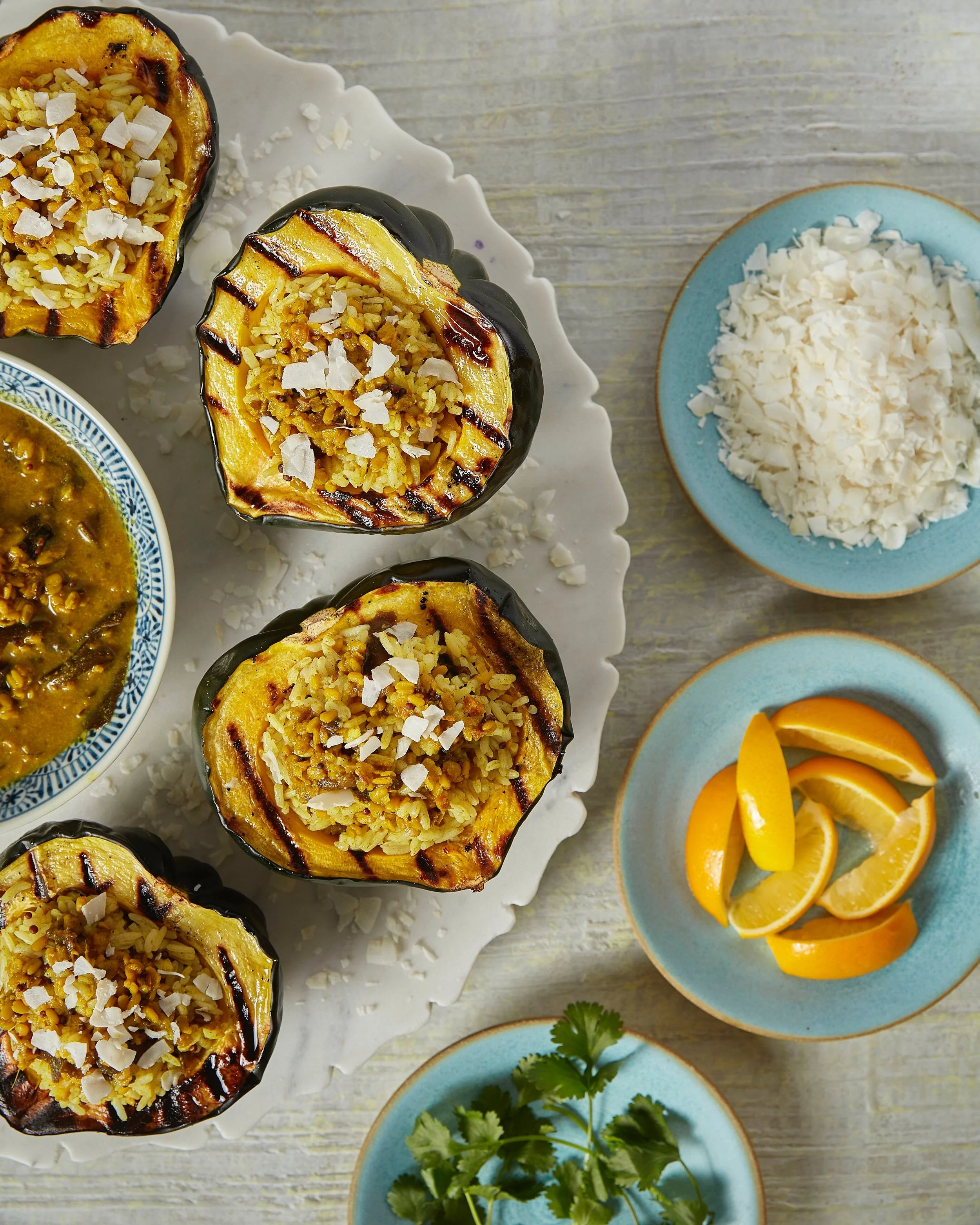Great Plates: Fried Pickled Mackerel
Photography by Dave Bryce / Story by Keith Recker / Recipe, food and styling by Rafael Vencio / Dinnerware courtesy of Villeroy and Boch
Turning porcelain and stoneware into objects that are not only useful but also beautiful is an art that has been with us for centuries. The world’s great plate makers are not stuck in history, though: they are listening carefully to what we want in terms of ease, functionality, and mood. We explored some of the most stunning plate designs with Rafael Vencio, stylist, cook, urban farmer, and TABLE contributor.
Villeroy and Boch’s It’s My Match collection channels a nature-inspired Zen feeling to the table. When Rafael saw these deep-green plates embossed with a kiwi pattern, he felt a tropical vibe and whipped up a Fried Pickled Mackerel served with seared bok choy and fresh veggies drizzled with a ginger-gochujang dressing. How to make these bright flavors, perfect for spring and summer weather, is explained online at tablemagazine.com.
Fried Pickled Mackerel
1 whole mackerel, around 2 to 4 lb
1 cup apple cider vinegar
1 large shallot, sliced
4 cloves garlic, crushed
1 tbsp kosher salt
1 tbsp fresh ground black pepper
1 lemon, juiced
2 limes, juiced
2 cups oil for frying, or more as needed
Clean and gut mackerel; slice incisions along each side to facilitate marinating and cooking.
Combine vinegar, shallot, garlic, salt, pepper, lemon, and lime juice; marinate fish for at least 6 hours or overnight.
Heat oil in a pan large enough to fit the whole fish. Shallow-fry until brown on each side. Season with salt after fish comes out of the fryer.
Side dish:
Seared baby bok choy with radish, red peppers, cucumber, and gochujang dressing.
For the dressing:
One bottle of sesame ginger dressing, or anything similar that you prefer; add ½ cup gochujang (Korean pepper paste) and mix until combined.
Pavlova
This recipe works best using a food dehydrator set at about 125 degrees or the lowest setting of an oven at around 200 degrees; a stand mixer fitted with a balloon whisk is the most efficient way to make this.
1 tsp vinegar (apple cider or white) or lemon juice
¼ tsp salt
2 tsp vanilla extract
1 tsp cornstarch
6 egg whites, from large eggs
1 ½ cups granulated sugar
Parchment-lined sheet tray
Combine vinegar, salt, vanilla extract, and cornstarch until thoroughly combined, set aside.
Whisk egg whites slowly first at medium speed until it starts to froth; increase speed to high once whites begin to foam. Gradually add sugar, being careful not to add too much at once. Whisk until stiff peaks form; add the vinegar mixture, set aside, and mix until combined.
Trace even circles on the parchment to control portion or divide into 10 mounds. Flatten the middle with a back of a large spoon and free-form a bowl shape. Dehydrate until dry and brittle - the surface should crack easily if roughly handled.
For the whipped cream:
1 cup heavy cream and ¼ cup sugar; combine and whisk until stiff peaks form.
For the seared strawberries:
Wash and hull a pint of strawberries; toss with enough oil to lightly coat the strawberries and sprinkle a little sugar (about 2 tablespoons). Make pan searing-hot and cook briefly to get a hard sear on one side.
Optional Garnish:
Coconut jam: warm and drizzle over Pavlova and strawberries.
12 Month - 6 issue subscription












Indulge in the taste spring with this delicious Cherry Galette